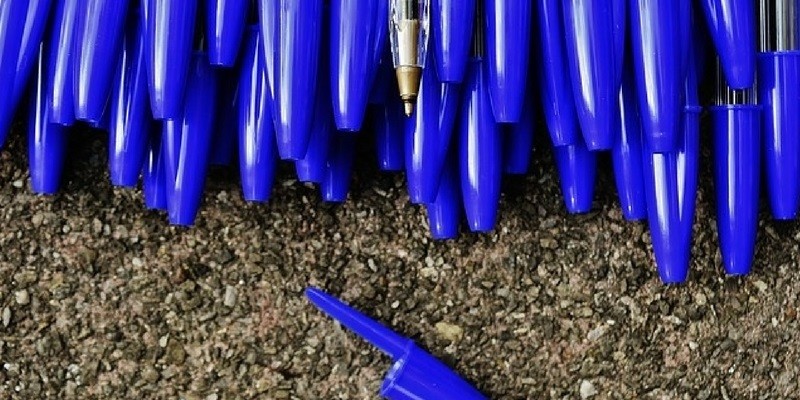Estimated reading time: 6 minutes
- Enhance Competition: Reverse auctions drive cost savings by creating a transparent and competitive bidding environment, motivating suppliers to offer their best prices and encouraging innovation in product and service delivery.
- Streamlined Procurement: By automating and simplifying various aspects of the purchasing process, reverse auction software reduces time and resources spent on procurement activities, resulting in more efficient operations and significant cost savings.
In the world of purchasing, every dollar counts. Companies are always looking for ways to optimize their procurement processes and achieve cost savings to improve their bottom line. One tool that has gained considerable attention in recent years is reverse auction software. By leveraging this technology, businesses can streamline their purchasing operations, enhance supplier competition, and unlock significant cost savings.
Boost Your Bottom Line:
In this blog post, we will explore how reverse auction software can help businesses achieve cost savings in their purchasing activities. We will discuss the benefits of implementing this technology. We will also share some best practices for getting the most out of your reverse auction platform.
What is Reverse Auction Software?
Reverse auction software is a digital platform. It allows buyers to solicit bids from suppliers in an open, competitive way.
This process is done in real-time. Unlike traditional auctions, where buyers compete to buy, reverse auctions have a different process.
Suppliers compete against each other to win contracts. They do this by offering the lowest prices. This dynamic reduces costs and enables buyers to assess suppliers according to delivery times, quality, and other performance metrics.
Cost Savings Through Reverse Auction Software
1. Increased Supplier Competition
One of the most significant drivers of cost savings in reverse auctions is the heightened competition among suppliers. By creating a transparent bidding environment, reverse auction software encourages suppliers to offer their most competitive prices. It also encourages suppliers to come up with new ways to provide products and services while keeping costs low.
2. Improved Market Intelligence
Reverse auction software provides buyers with valuable market intelligence that can inform purchasing decisions. By analyzing historical data and current market trends, procurement professionals can gain insights into pricing patterns, supplier performance, and potential risks. This information can help buyers make more informed decisions, leading to cost savings and improved supplier relationships.
3. Streamlined Procurement Processes
Reverse auction software simplifies and automates many aspects of the procurement process, helping businesses save time and resources. This includes automating the creation of bid documents, facilitating supplier communications, and managing the bidding process. Procurement teams can simplify their activities to focus on more strategic tasks. This reduces the risk of errors, resulting in cost savings over time.
4. Enhanced Negotiation Power
Reverse auctions provide buyers with a powerful negotiating tool that can lead to significant cost savings. Procurement professionals can use real-time data and market intelligence to spot opportunities for negotiation. They can then talk to suppliers to get better deals.
Negotiating price, terms, or other value-added services can help companies save money. This can also improve their bottom line.
5. Reduction of Maverick Spending
Maverick spending – or purchasing goods and services outside of established procurement processes – can lead to significant cost overruns. Reverse auction software can help companies mitigate this risk by providing a centralized platform for purchasing activities.
Procurement teams can use this technology to monitor and control spending. This ensures that all purchases meet company policies and negotiated contracts. This can lead to considerable cost savings over time.
6. Improved Supplier Performance
Reverse auction software allows buyers to evaluate suppliers based on a range of performance metrics, including quality, delivery times, and sustainability. Companies can foster competition and incentivize suppliers to meet performance criteria. This can secure better deals and reduce the risk of costly supply chain disruptions. This can result in cost savings and improved overall business performance.
Ensuring Cost Savings Generated During a Reverse Auction Can Actually Be Achieved
Reverse auctions have the potential to save money. To ensure this happens, strategies and best practices must be implemented. Below are six steps to help companies maximize the cost savings generated during a reverse auction:
1. Develop a Comprehensive Auction Strategy
Before launching a reverse auction, companies should develop a clear and comprehensive auction strategy. This should include defining goals and objectives, determining the products or services to be procured, and identifying potential suppliers. Additionally, procurement teams should establish a bidding process that is fair, transparent, and encourages competition. This may involve setting minimum bid increments, providing clear bid evaluation criteria, and establishing a timeline for the auction process.
2. Thoroughly Vet and Pre-qualify Suppliers
To ensure cost savings are realized, companies must vet and pre-qualify suppliers before inviting them to participate in the reverse auction. Assess the supplier’s financial stability.
Evaluate their production capabilities and capacity. Verify their compliance with industry standards and regulations. Companies can reduce the risk of supply chain disruptions by pre-qualifying suppliers. This ensures the company is working with reliable partners who can deliver on their promises.
3. Communicate Expectations and Requirements Clearly
Effective communication is critical to the success of a reverse auction. Companies should clearly communicate their expectations and requirements to suppliers, including technical specifications, delivery timelines, and quality standards. This will help ensure that suppliers fully understand the buyer’s needs and can submit competitive bids that meet these requirements.
Clear communication is important. It helps to avoid misunderstandings, disputes, and delays. These could otherwise reduce the cost savings made during the auction.
4. Monitor and Manage Supplier Performance
After the reverse auction has finished, a contract is awarded. Companies then must keep track of and manage supplier performance.
This will ensure that cost savings are sustained long-term. This includes tracking key performance indicators (KPIs), such as on-time delivery rates, product quality, and adherence to contractual terms. Supplier performance reviews should occur regularly.
Ongoing communication is also important. This can help to identify potential issues quickly. Companies can then take action before the issues increase and affect cost savings.
5. Implement a Continuous Improvement Process
To maximize the cost savings generated during a reverse auction, companies should adopt a continuous improvement mindset. This involves regularly reviewing procurement processes, supplier performance, and market trends to identify opportunities for further optimization and cost reduction. Companies can stay ahead of changing market conditions by implementing a continuous improvement process. This ensures they are always capturing the full potential of reverse auction cost savings.
6. Leverage Data and Analytics
Data and analytics play a critical role in ensuring the cost savings generated during a reverse auction are realized. By tracking and analyzing procurement data, companies can gain insights into supplier performance, pricing trends, and potential risks. This information can help procurement teams make more informed decisions, negotiate better contracts, and identify opportunities for ongoing cost savings.
Companies can use data and analytics to measure their performance against industry peers. This will help them identify areas where they are not performing well. They can then develop targeted strategies to improve.
Conclusion
Reverse auctions offer a powerful tool for companies looking to achieve cost savings in their purchasing activities. Companies must implement a comprehensive auction strategy to ensure savings are realized. They should thoroughly vet and pre-qualify suppliers, communicate expectations and requirements clearly, and actively monitor and manage supplier performance.
Companies can maximize the cost savings potential of reverse auctions by adopting a continuous improvement mindset. Additionally, they can leverage data and analytics to further improve their overall procurement performance.












